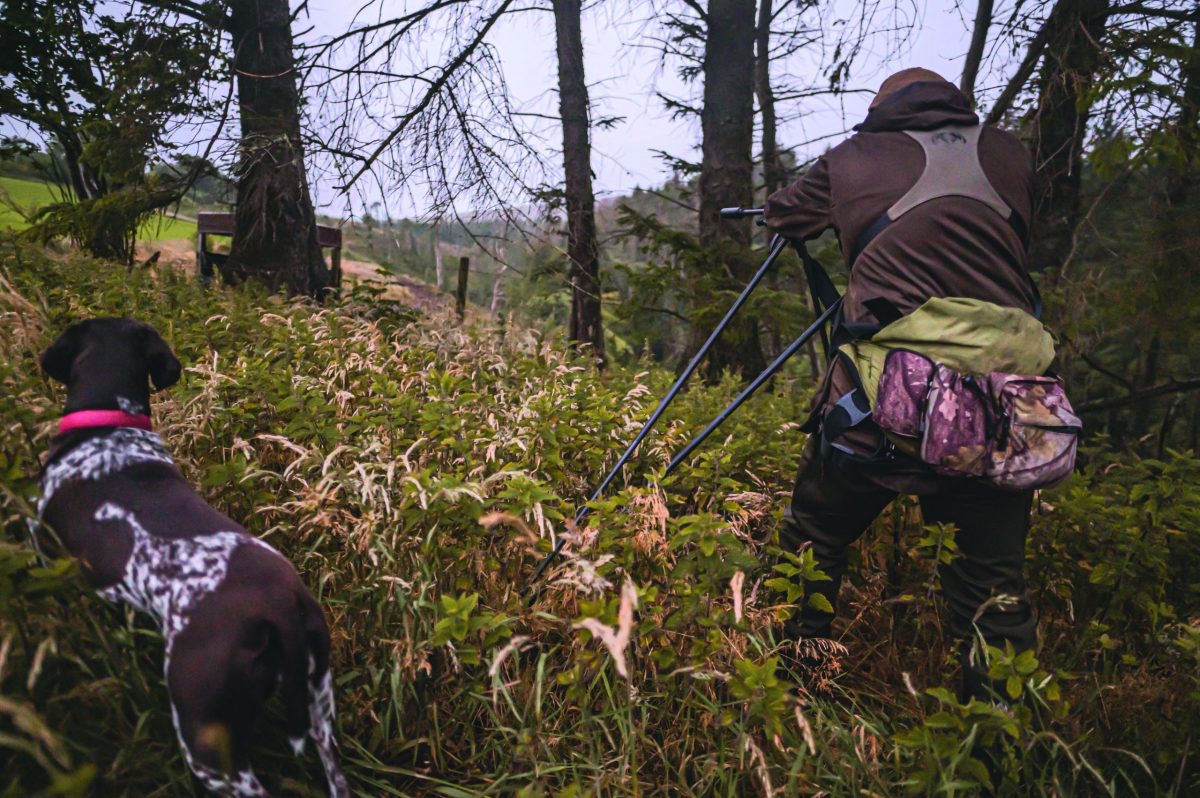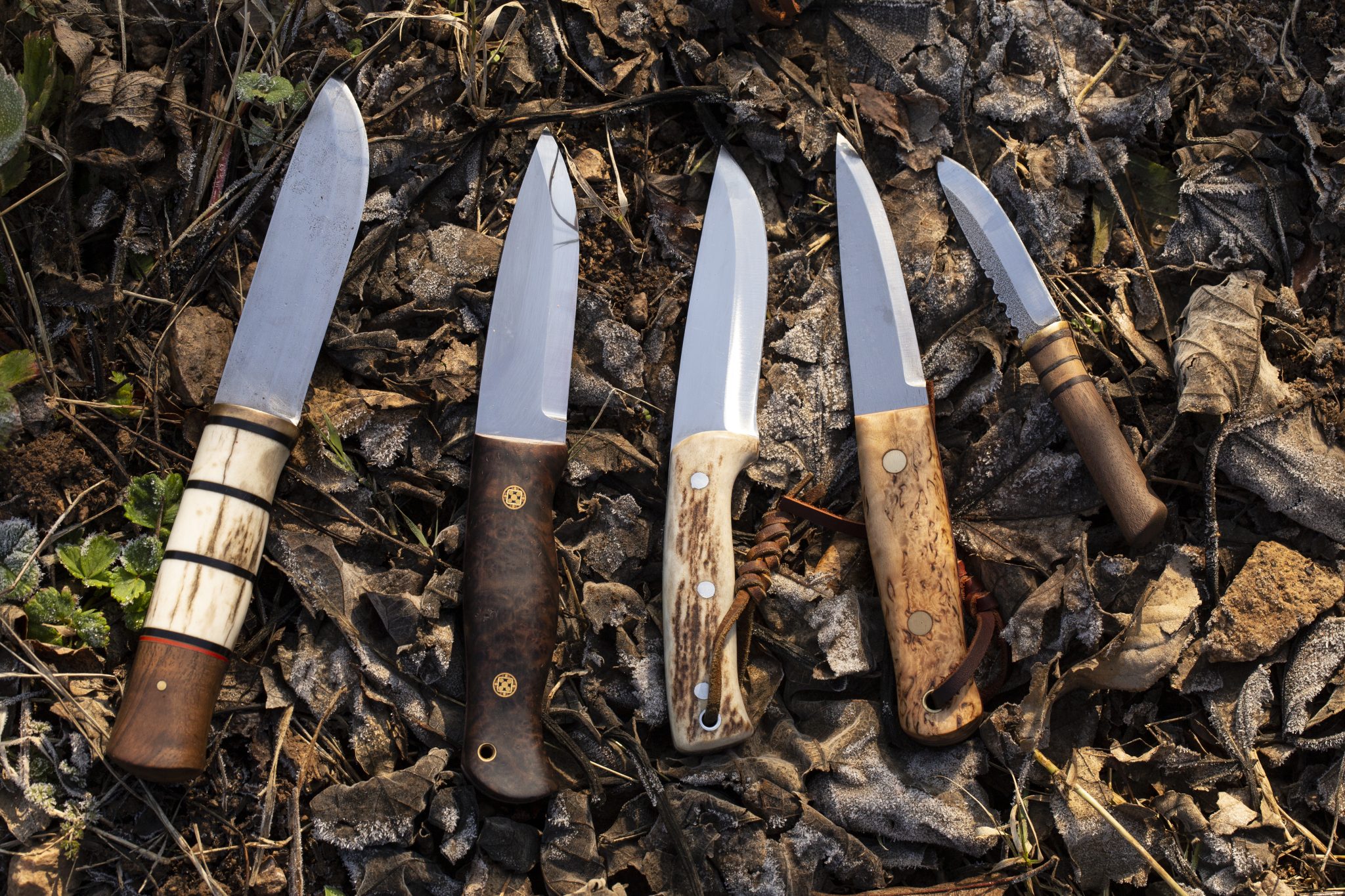Win CENS ProFlex DX5 earplugs worth £1,149 – enter here
Can any dog be trained to become a deer dog?

Most readers will be aware that I almost always have a deer dog with me when I am stalking, and have operated like this for many years. I am working Zosia, a German shorthaired pointer, and she will be a fixture at my side when I am out. The only occasion she won’t be with me is more to do with the logistics of travelling or the accommodation situation and nothing to do with her ability to do the job.
I don’t follow the normal convention you might expect with a deer dog by having her at heel. I like her to operate out in front where she gets a wider scent picture and I can see her reaction the moment she smells deer. In effect, she is a mobile early-warning radar.
Her second function is to locate a lost deer. A perfectly well-shot deer can, even after a relatively short dash into cover, be incredibly difficult to find. This is often compounded by low light, so Zosia is always on hand if there is a wounded deer to deal with.
Zosia works out in front so she gets a wider scent picture and can alert Chris to deer in the vicinity
I get many questions about my dogs and was recently asked if I thought that any canine could become a tracking or stalking dog. It’s a good question and my initial view is ‘yes’. For many years I was a rough shooter, wildfowler and game-shooting man and for most of that time I worked springers, cockers or labradors. Taking one of those breeds from the shooting field or foreshore into the stalking field was a relatively natural progression.
They have, after all, been selectively bred for the role for many years to have good noses and a temperament for the job, so I have a fair bit of experience training some of the HPR breeds.
Worthy of note is Oscar, a weimaraner who came to us by chance at around nine months old. He was from pure show strain and up to the age of 26 months, when I first introduced him to stalking, had never worked nor even been trained to work. He developed into one of the best stalking dogs I have ever had. His tracking ability was highly regarded by clients who had witnessed him work and his last day on earth was spent stalking roebucks in the morning — along with his understudy, Zosia — before passing away that same afternoon. When it’s my time to go, I will take that option all day long.
Air scenting
All the above, however, are breeds with a long tradition of being worked in the shooting field, foreshore and farms of the UK, and are natural air-scenting dogs. While they can be encouraged to ground scent, they are not true specialists in this area; that accolade falls to the hounds.
Many years ago, and with a great deal of difficulty, I managed to acquire a Bavarian mountain hound, Burt, at a time when there were far fewer available than there are now. I seem to recall that there were only two breeders who were allowed to bring them into the UK. A more stubborn breed I have yet to encounter; I had some real battles while training him, but we eventually got there. It is that very stubbornness and single-minded attitude that produced the finest tracking dog I have ever handled
or witnessed working a line.
Bavarian mountain hounds can be stubborn but that single-minded attitude makes them great deer dogs
Mortally wounded
When tracking I worked him on a long harness. He was too quick to work free; once on a line he would not leave it and if the deer was mortally wounded, he would find it. His best track was to recover a sika stag that had run half a mile in horrendous weather. More impressively, Burt followed the trail 36 hours after the beast had been shot.
But what of all the other breeds? From mongrel through terrier to toy and show, along with anything in between, could they make the transition to a credible stalking dog? As I said, the qualified answer to such a conundrum is yes. The qualification element I mention will largely be down to failings of the handler and not the dog.
In most cases, I feel the dog would have the basic sense and instinct, irrespective of breed or type, to be able to use its nose to scent a deer and follow up a blood trail. Dogs are carnivores and their ability to track and kill prey is in their DNA. They are also social and pack animals with a structured hierarchy; they naturally want to follow and to please.
Shot deer can travel a surprising distance if they dash for cover, so a dog that can track an injured beast is invaluable to the stalker
I posed the question to my fellow Shooting Times contributor Ellena Swift and she revealed that her personal favourites are the Bavarian mountain hound and teckels. “Both are phenomenal and wonderful to watch,” she says. “We trained a labrador to stalk and track many years ago, she was amazing. She would even copy the stalker, crawling when we got near a deer and had to stay low.
“The same applies to any kind of scent work; most dogs have the ability to do it well,” Ellena adds. “They just need the drive to find the reward at the end. This drive does vary from dog to dog and certain breeds definitely find this work comes easier than others. Ground-scenting dogs are more suited purely because they follow the path of quarry, whereas an air-scenting dog will pick up the scent then quarter into it.
“With blood trails, the former is preferable, but if the trail has been ruined by weather, or perhaps strong winds are making it hard to follow, an air-scenting dog can be valuable.’’
Phenomenal
I have no experience of training a non-typical breed for deer work, but I understand many are used effectively in this role. Relevant also must be what we are asking of the dog, as this will have a bearing on expectations and ultimately what can be achieved. During the 20 or so years since I formed South Ayrshire Stalking, some of the syndicate Rifles, who assist us with the deer management on the ground, use dogs that fall into the unusual breeds category.
The strangest I saw working was a white miniature poodle — she was extremely good, by the way — but others have included terrier breeds, borders, whippets, malinois, German shepherds and collies, along with a huge variety of cross-breeds. And why not? Any dog, regardless of breed or background, will have a much better nose and tuned-in senses than we will ever have. We struggle to smell a red stag at the end of the rut when we are standing over it.
Ground-scenting dogs track the path of the quarry, rather than finding scent and quartering into it
Another factor, which I have touched on already, is what the stalker wants from the dog. One of my regulars uses a border terrier and, to my knowledge, he has used this breed for more than 40 years. He does not stalk on foot but always uses a tower, high seat or ground box; all he expects from the dog is to follow up and locate any deer shot from his vantage point.
The dog, being small enough to carry into either seat or tower, is trained to sit quietly by him throughout his vigil. If he is successful, he carries the dog down and lets it find the deer — it works for him and I suppose the dog is company as well as an effective hand warmer during a long session in the high seat.
Perfect lines
I can give many more examples, but it is important to remember that you can spend all the time in the world painstakingly selecting and choosing a breed renowned for its stalking prowess, taking care to get the perfect lines from tried-and-tested dogs then finally seeing the parents work before parting with your hard-earned cash — only for it all to go wrong.
But then there’s the case of Oscar, my weimaraner, who came from show stock and never had any shoot or deer-related training until he was well over two years old. He took to it like the proverbial duck to water and was one of my best stalking dogs.
So yes, I do feel that any dog can make it into the stalking field, subject to the limitation of its owner.
Related Articles
Get the latest news delivered direct to your door
Subscribe to Shooting Times & Country
Discover the ultimate companion for field sports enthusiasts with Shooting Times & Country Magazine, the UK’s leading weekly publication that has been at the forefront of shooting culture since 1882. Subscribers gain access to expert tips, comprehensive gear reviews, seasonal advice and a vibrant community of like-minded shooters.
Save on shop price when you subscribe with weekly issues featuring in-depth articles on gundog training, exclusive member offers and access to the digital back issue library. A Shooting Times & Country subscription is more than a magazine, don’t just read about the countryside; immerse yourself in its most authoritative and engaging publication.







